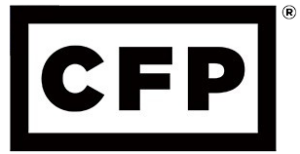My experience with financial fraud, and how to spot red flags
Financial fraud is a menace that can devastate individuals, families, and even entire economies. One of the most infamous cases in recent history is that of Bernie Madoff, whose Ponzi scheme defrauded investors of billions of dollars. The Madoff scandal serves as a stark reminder of the importance of vigilance and due diligence when it comes to managing your finances. And it’s one I’ll never forget.
I worked through the ordeal while at Wells Fargo Family Wealth, where clients were required to have $50M or more. The perfect targets for Madoff. A number of clients had proposed the idea of investing with him, saying a friend or relative were making great returns and they wanted in on the action. When the investment team at Wells Fargo attempted due diligence, one advisor described it as “looking into a black box.”
 Prior to this experience, my father was the victim of a Ponzi scheme in the 80s, which unfortunately coincided with his retirement. He met the man through church who was well respected in his community. On top of that, he was a CPA, which I find is one of the professions my clients trust most. This man’s
Prior to this experience, my father was the victim of a Ponzi scheme in the 80s, which unfortunately coincided with his retirement. He met the man through church who was well respected in his community. On top of that, he was a CPA, which I find is one of the professions my clients trust most. This man’s clients victims ranged from California up through Canada and included his own family. He promised big returns and asset protection by utilizing off-shore accounts in the Cayman Islands. That premise created the perfect excuse for any lack of transparency. When the scheme started to crumble, he skipped town and restarted a new Ponzi effort in Australia. He was finally arrested and after serving time in Australia was extradited to Canada to serve yet another sentence. Investors in Australia recouped some funds as his assets were auctioned off and seized. But those from the US and Canada saw little to no reimbursement or justice.
In this blog post, we’ll explore some key strategies for avoiding financial fraud and protecting your hard-earned wealth.
Have peace of mind that your financial advisor won't walk away with your account due to a Ponzi scheme or fraud.
Do Your Due Diligence: Before investing with any individual or firm, thoroughly research their background, credentials, and track record. Don’t rely solely on word-of-mouth recommendations or promises of high returns. Use reputable sources such as regulatory agencies (BrokerCheck), relevant boards (CFP®), financial news outlets, and independent analysts (lists from Five Star, CNBC, Investopedia, etc) to verify the legitimacy of potential investment advisors. Working with licensed professionals can provide an extra layer of protection and recourse in the event of misconduct or fraud. Don’t be afraid to ask questions about their advisor, the firm, and how their recommendations make sense for you.
Make sure to receive and read the advisor’s ADV. Speaking of due diligence, at the start of the engagement and the first quarter of each year, you should receive an ADV Brochure from your advisor. This brochure is also posted on BrokerCheck. It provides key information about the company, including its business practices, fees, conflicts of interest, and any discipline that it faced in the past. It also includes background information on each of it’s advisors. What’s contained in the ADV should match up to any company agreements you’re being asked to sign. Have peace of mind knowing this brochure is filed with the state or SEC, who periodically performs routine audits to ensure a firm is in overall compliance.
Understand where your accounts live and who’s involved: This may be the most important piece of the puzzle in order to feel confident in your decision. Madoff was akin to the old saying of judge, jury, and executioner. Investors wrote checks to him directly for amounts to be invested (red flag #1), the accounts were custodied by him (red flag #2), and the performance reporting was fabricated by him and a crooked colleague (red flag #3). To say it plainly, he was in control of all aspects of the investment process. This is how it should look:
- Checks or rollovers to be invested are made out in your name, as they’ll be deposited into accounts in your name. If the check is made out to the advisor, that means they’re depositing those funds into accounts in their name. That’s not normal and a major red flag. This is not to be confused with fees you may be paying. If you pay your advisor a fee for service, then yes, that should be in the advisor’s or the firm’s name.
- Accounts live on an independent custodial platform. The custodian is responsible for holding and administrating the account. The custodian will have their own set of fees, process, and paperwork related to account openings, trades, wires, profile updates, closures, etc. Think of Schwab, Vanguard, and Fidelity, as those are some of the most well-known options. Make sure you’re aware of who the advisor is using for a custodian. Understand that the advisor should not also be the custodian, or in full control of the custodian, which was the case with Madoff. But keep in mind it’s common for these big custodians to also have their own advisory wing. Vanguard advisors use Vanguard as a custodian, Fidelity advisors use Fidelity as a custodian. Given the sheer size of these custodians, it’s clear that no one advisor is in control of the custodian. That said, you have to consider that these advisors are tethered and incentivized by the custodian. Meaning, a brand advisor will open accounts on the brand’s platform and will buy the brand’s funds. This is not a sign of fraud, but you need to consider if this route fits your best interests in terms of meeting investment goals as some find this limiting while others consider it efficient.
- You should receive quarterly performance reporting. You may even receive something monthly, and ideally, you should be able to log into your account at any time to see performance and transactions whenever you’d like. Advisors, as part of their job, should also do these checks to ensure the investments stack up against similarly positioned funds and benchmarks. Custodians generally provide performance reporting, but sometimes it’s without the context of benchmarks or helpful time periods. It’s accurate data, but hard to understand data. Therefore, many advisors also utilize an independent provider or software to help make sense of performance data (for themselves and the client). Your advisor may provide you with portal access with this independent provider so you also have the benefit of seeing the data in a more user-friendly light. But again, your advisor should not be in control of performance data. This data should come from another source leaving the advisor to simply interpret how well the portfolio is doing in order to ensure the funds are meeting your goals and decide on any necessary adjustments. Your advisor should also have the ability to create custom and relevant performance reports to share with the client utilizing the provided data.
- Understand that the advisor’s role is to place trades and requests as needed. Most advisors prefer to have discretion on the account, meaning they have the ability to place trades without seeking permission each time. This is convenient if they’d like to make a quick move in or out of a fund, perform tax-loss harvesting, annual rebalancing, etc. If they do not have discretion, they will be in touch with you first to get permission on recommended trades. The advisor’s trades within the account should be in accordance to your agreed upon Investment Policy Statement (IPS). This document will spell out the target allocation for each account, allowed wiggle room, and any reasons you may be off target. The custodian has the responsibility to make sure the advisor is acting within their scope, such as ensuring the money is moving to authorized accounts. If a request is made for money to move to a registration unlike your own (let’s say your name to a joint account), expect paperwork from the custodian to authorize the request. If you want to send money to a third party (let’s say your local bank account), expect paperwork to come your way. If you regularly transfer funds in or out of a third-party account, you can create a “standing authorization.” Understanding this can provide peace of mind that your advisor can’t simply authorize a transaction to have your funds directed to their piggy bank.
Beware of Promises for Unrealistic Returns: If an investment opportunity promises consistently high returns, in a short time, to a select group of clients, with little to no risk, it’s likely too good to be true. This is not to be confused with products like annuities or whole life insurance. Much like pensions, they often guarantee a return, eventual payout, or income stream. But you’ll find the assumed returns are generally on par with money market or long-term bonds. The products are also sold and offered to a large audience. They may also require a long runway to ensure the investments have time to navigate short-term market turbulance. All of this is to reduce risk and provide greater stability in order to make good on what’s being promised. So if you’re being presented with overly optimistic projections, be skeptical.
Monitor Your Accounts: As mentioned above, you should be provided one or more ways to monitor your accounts via investor portals. Take advantage of this! Feel free to regularly review your investment accounts, statements, and transactions for any suspicious activity or unauthorized withdrawals. Because even if your advisor is honest, there is the chance of fraud related to hacking or scams. Think of how many stories have been in the news related to an elderly loved one willingly sending a wire to “help a grandchild” just to find out it was a scam. Report any discrepancies or irregularities to your financial institution or regulatory authorities immediately. Prompt action can help limit the damage and increase the likelihood of recovering lost funds in case of fraud.
Protecting yourself against financial fraud requires diligence and a willingness to ask questions about the players involved in your account management. By following the strategies outlined in this blog post and staying vigilant, you can reduce the risk of falling victim to fraudulent schemes and safeguard your wealth for the future. Remember, when it comes to your finances, it’s always better to be safe than sorry.
You may also be interested in knowing more about FDIC protection.




